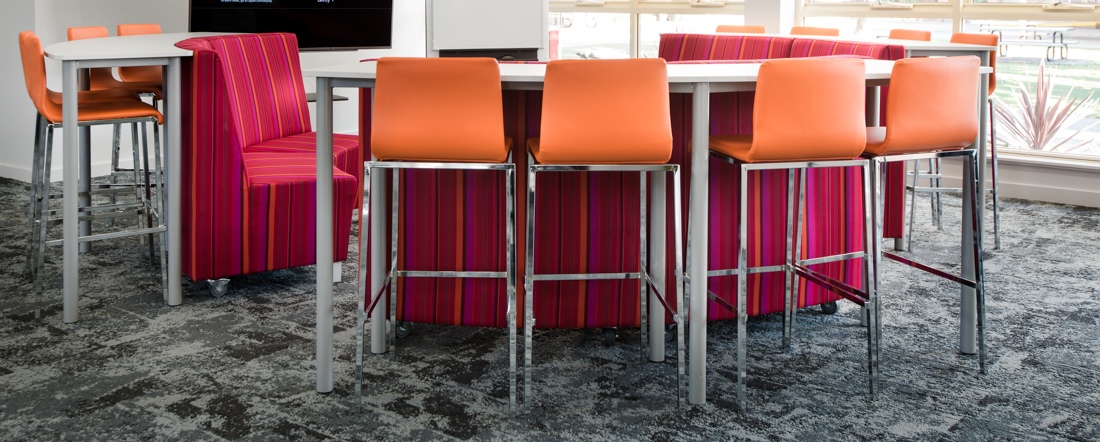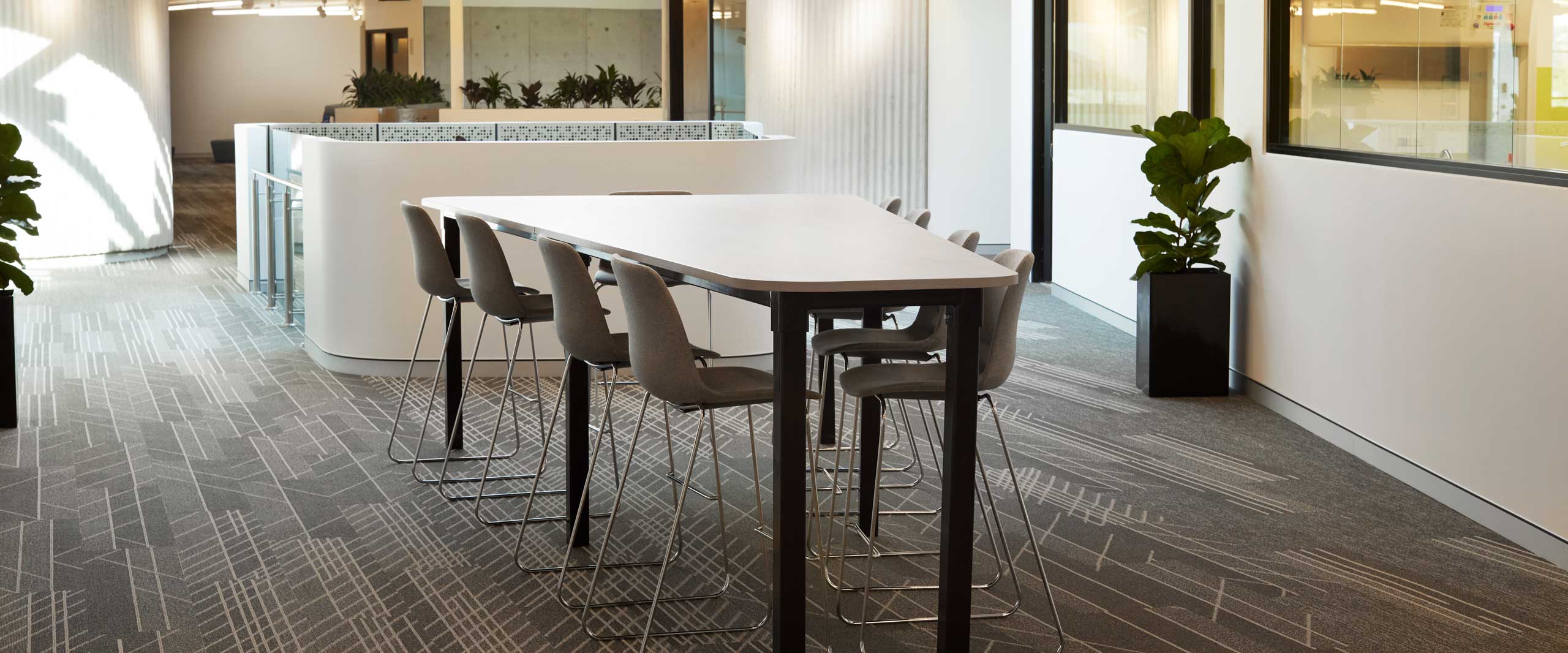This is the mantra for Academia at Civic. Schools around Australia are seeing a need to move away from the rigid desk & chairs & the teacher-centred learning strategy to a new, more flexible approach with ottoman & booth seating, otherwise known as Mode 3. Join the revolution, its taking learning spaces by storm to transform them into inspiring & welcoming environments for students.
First there was Mode 1, a formal classroom structure with neatly arranged tables and chairs; it catered for an on-task approach with very limited allowance for social interaction and collaboration.
Mode 2 was an extension of Mode 1. With more flexibility, it incorporated a trans-disciplinary structure that included a break out area, usually at the back of the classroom where students could work collaboratively.
And Mode 3? It’s a complete break away from the conventional… a flexible learning area that houses the campfire of concave ottomans to promote student discussion and teamwork, the waterhole for refreshments and informal conversation, the mountain top for teacher consultation and the cave for quiet, concentrated learning. This structure promotes a network of empowered brains that are free to explore.
Students are naturally creative. Compare the imagination of a 5-year-old to a 50-year- old. The growing child’s brain has the capacity to reach nearly 10 times the level of imaginative thinking. By building an environment that encourages each child’s ingenuity, schools can inspire students to use their creativity to learn and develop.
For more than 10 years we have worked with schools, collaborating to align pedagogy and space through a combination of furniture and furnishings. We have found that the Mode 3 approach for classroom design is definitely the way of the future.
The great benefit of Mode 3 is that it can be interpreted in different ways for each school. Of course it’s all about providing the best for the student’s growth and development but it also about choosing the shapes, the fabrics, the colours …and everything in between to complete the Mode 3 learning area.
Vibrant hues, diverse textures and styles that are specific to the school environment are becoming a popular trend, there is a greater focus on furniture that is custom-made with the school’s choice of fabrics and finishes instead of off-the-shelf furniture.
One of our educatipon consultants; Ben adds: “When I work with schools, I try to capture their vision and then put that vision on paper. It’s a real exhilarating feeling for me to be able to translate the vision into a 3D life-like drawing and present it to the school – working through this process cements the foundations for the project.”
Lourdes Hill College in Brisbane is a recent example of a school that has taken the Mode 3 approach. The school’s Senior Hub endorses an interpersonal, self-directed mode of learning that stands apart from teacher-directed whole-group instruction.

Located in the centre of the Senior Building, the hub was conceived as a place for Years 10–12 students to hang out between lessons. It is an established principle at the College that senior students need to achieve a balance of socialising and learning in order to acquire the fundamental skills required for the future. The Mode 3 area covers more than 150 sqm and offers an array of modular seating, ottomans and small collaborative tables, all close to the creature comforts that a kitchenette provides.
Our team members grew up in Mode 1 & 2 learning modes and we want our children to have the creative opportunity of Mode 3 learning.
We are continually brainstorming new ideas to make the Mode 3 concept even better. The students of today and tomorrow deserve it… It’s the ideal environment in which to develop independence, learn to be self-sufficient and find that work-life balance.
We are currently developing a brochure that explains the complete Mode 3 concept. WATCH THIS SPACE!
If you would like to share your ideas or new classroom refurbishments with us, please CLICK HERE

